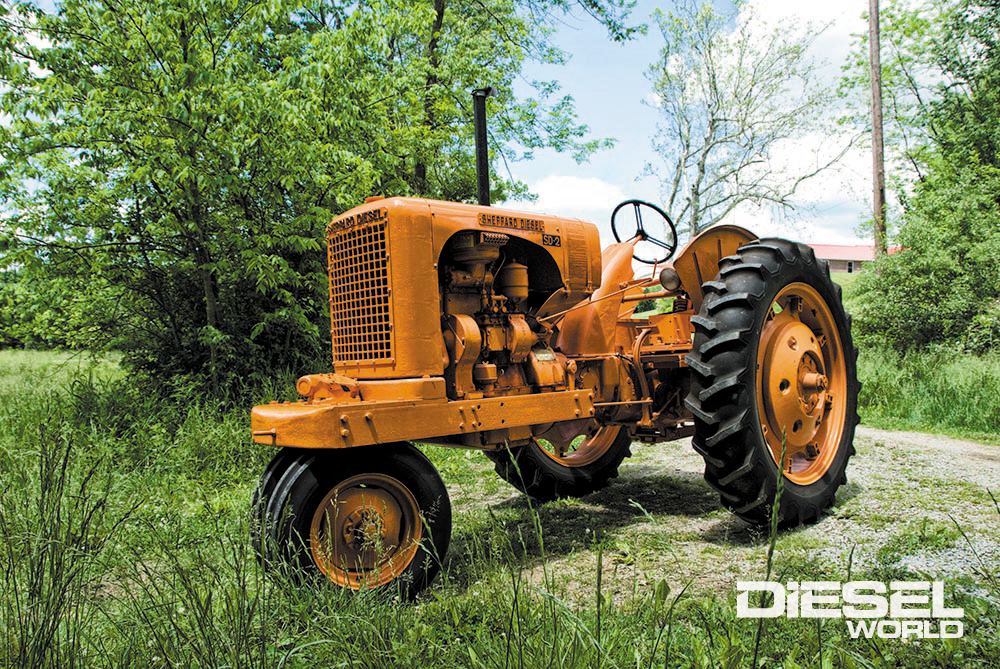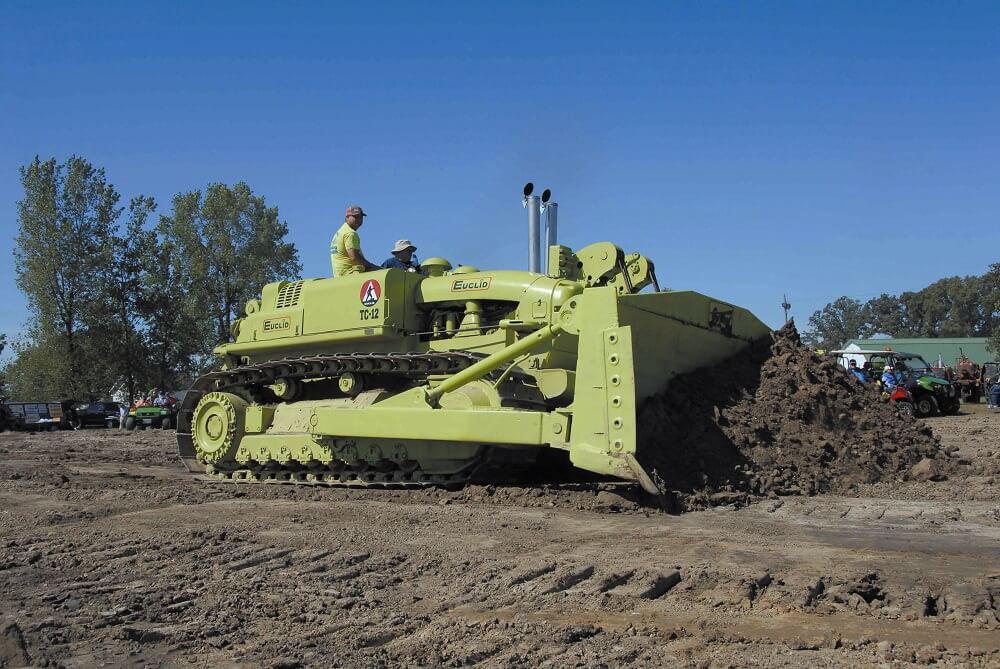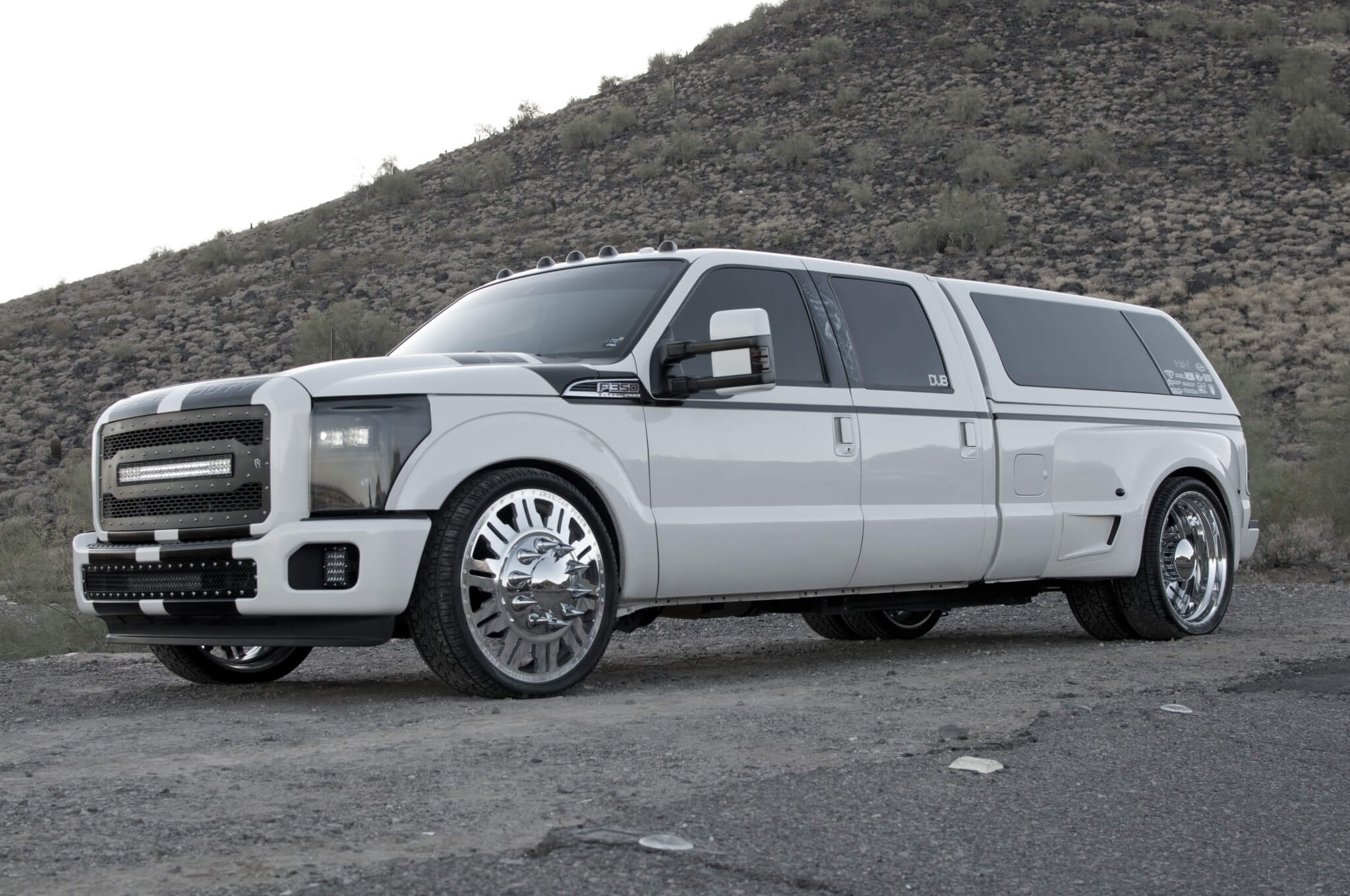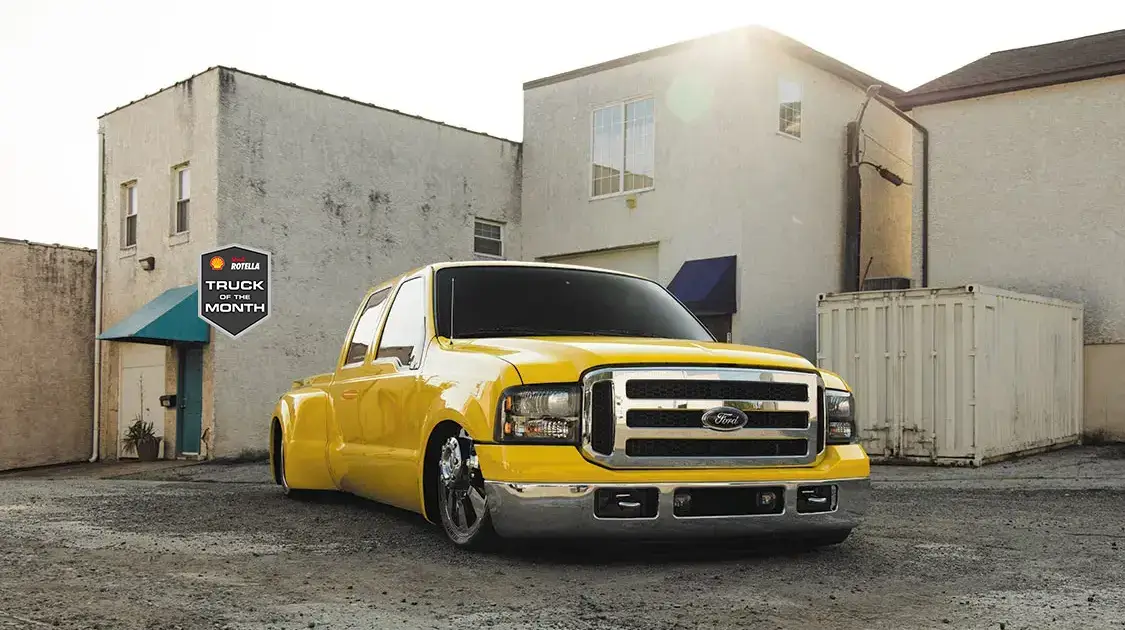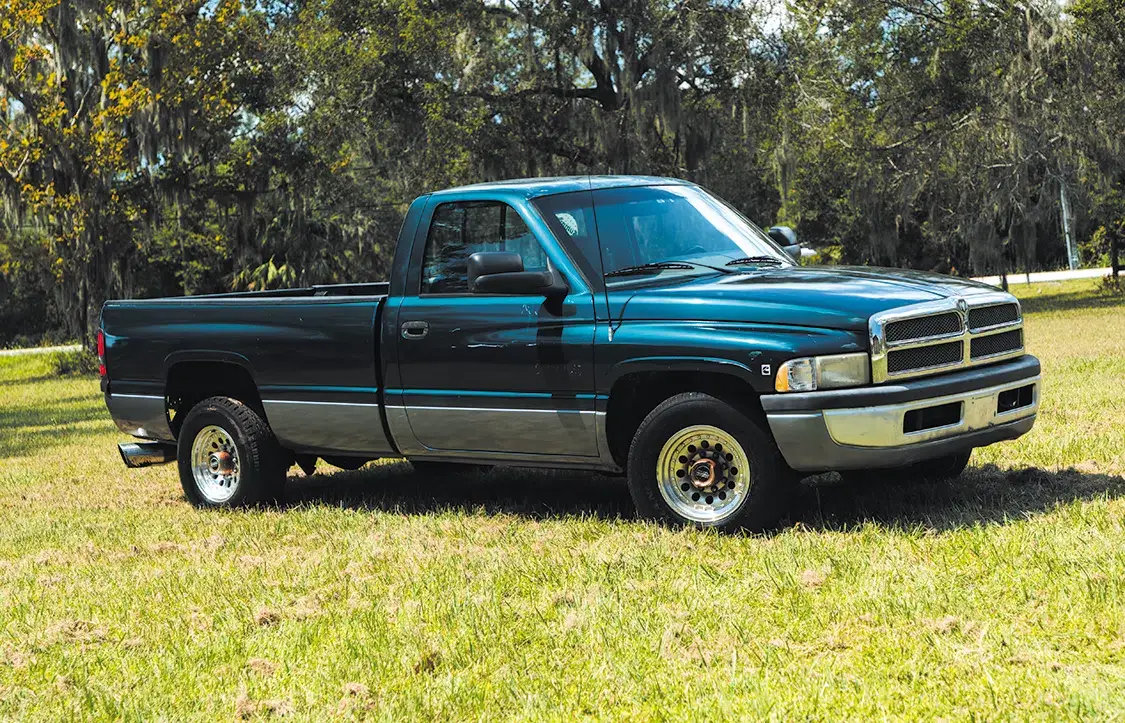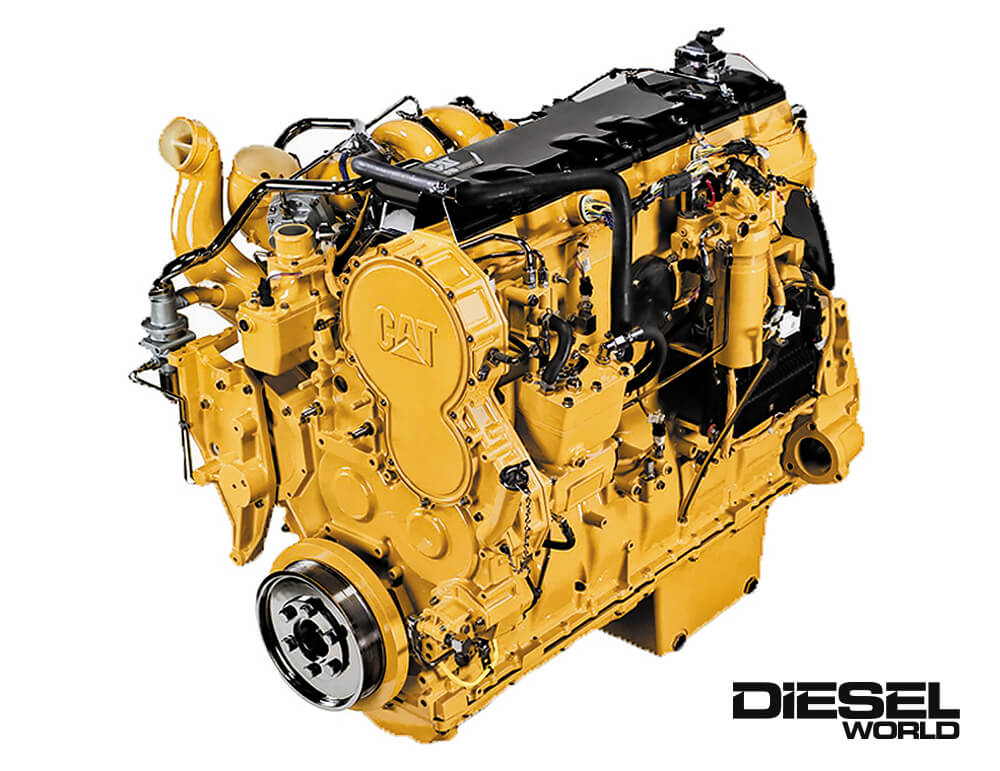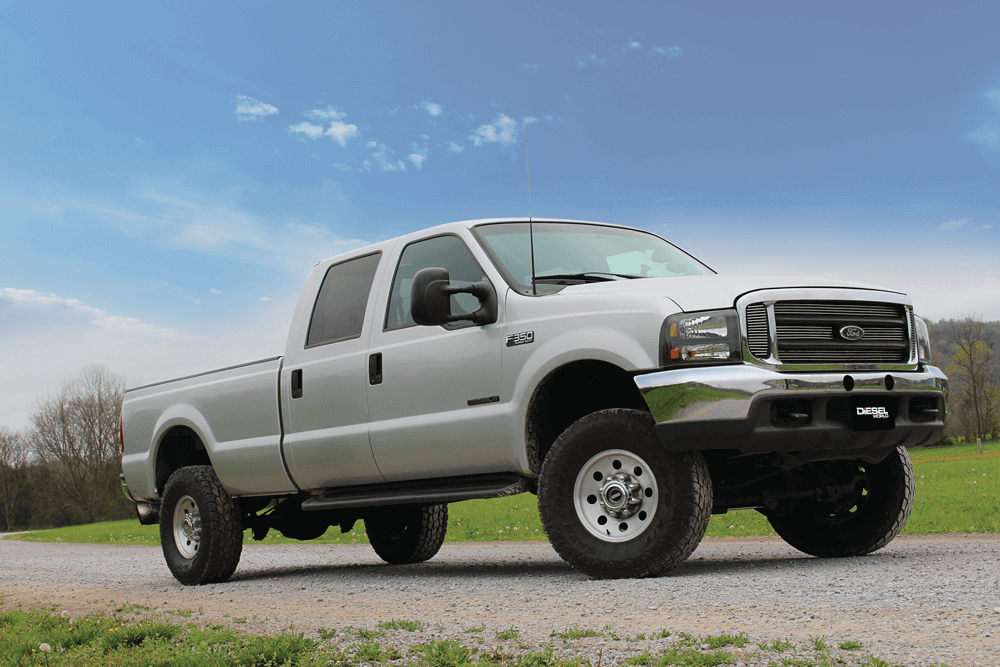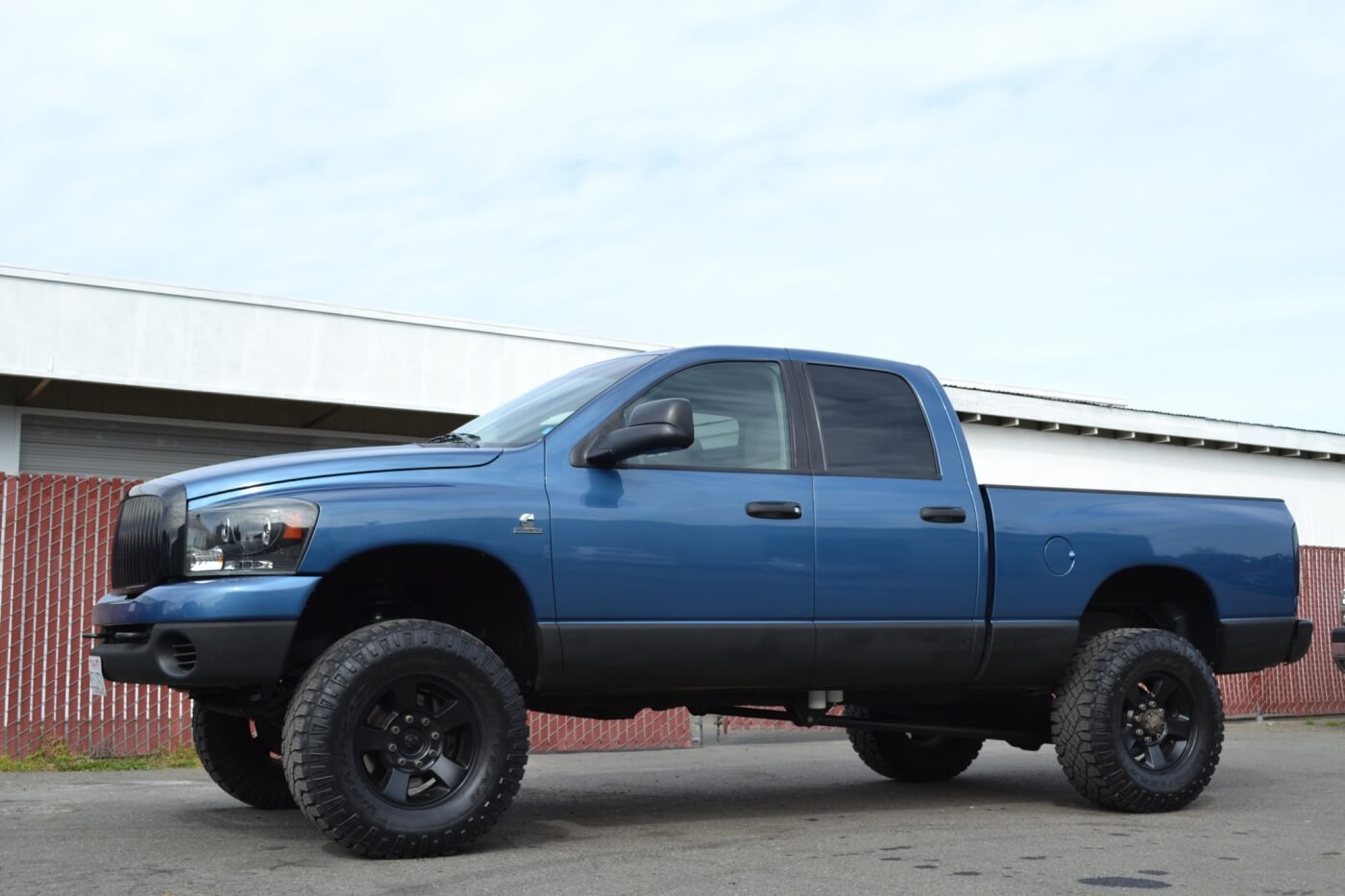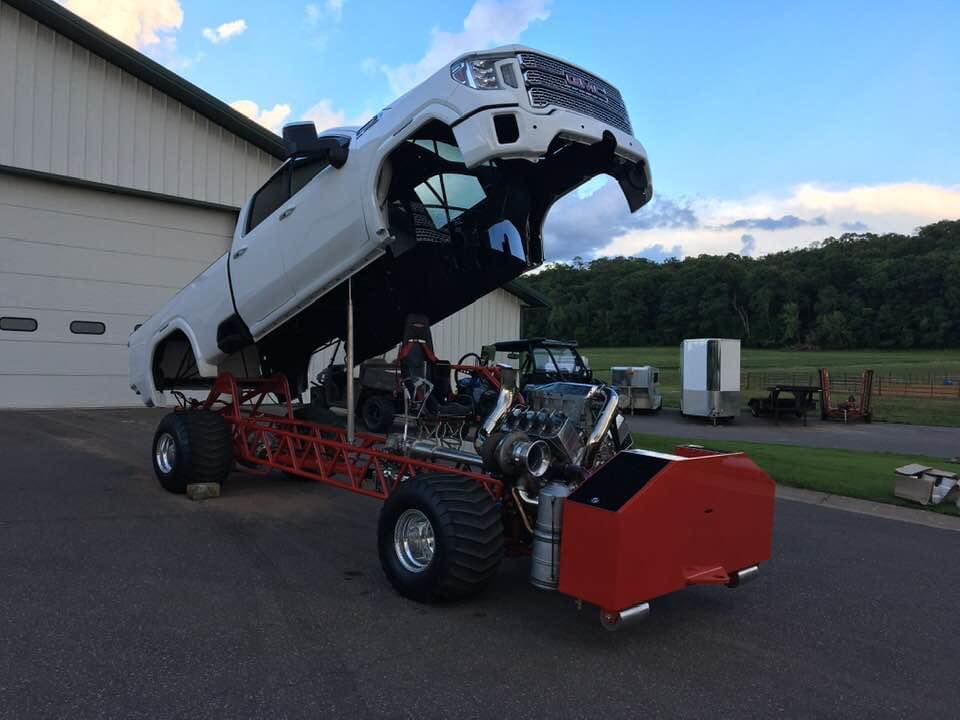The Dawn of Diesel Time
1903 Augsburg DM 12 Diesel
If you want to see the first compression ignition engine built by Rudolph Diesel, you have to go to Munich, Germany. If you want to see one of the earliest surviving examples of a production engine built using the Diesel patent, it’s a little closer to home- the Coolspring Power Museum in Coolspring, Pennsylvania.
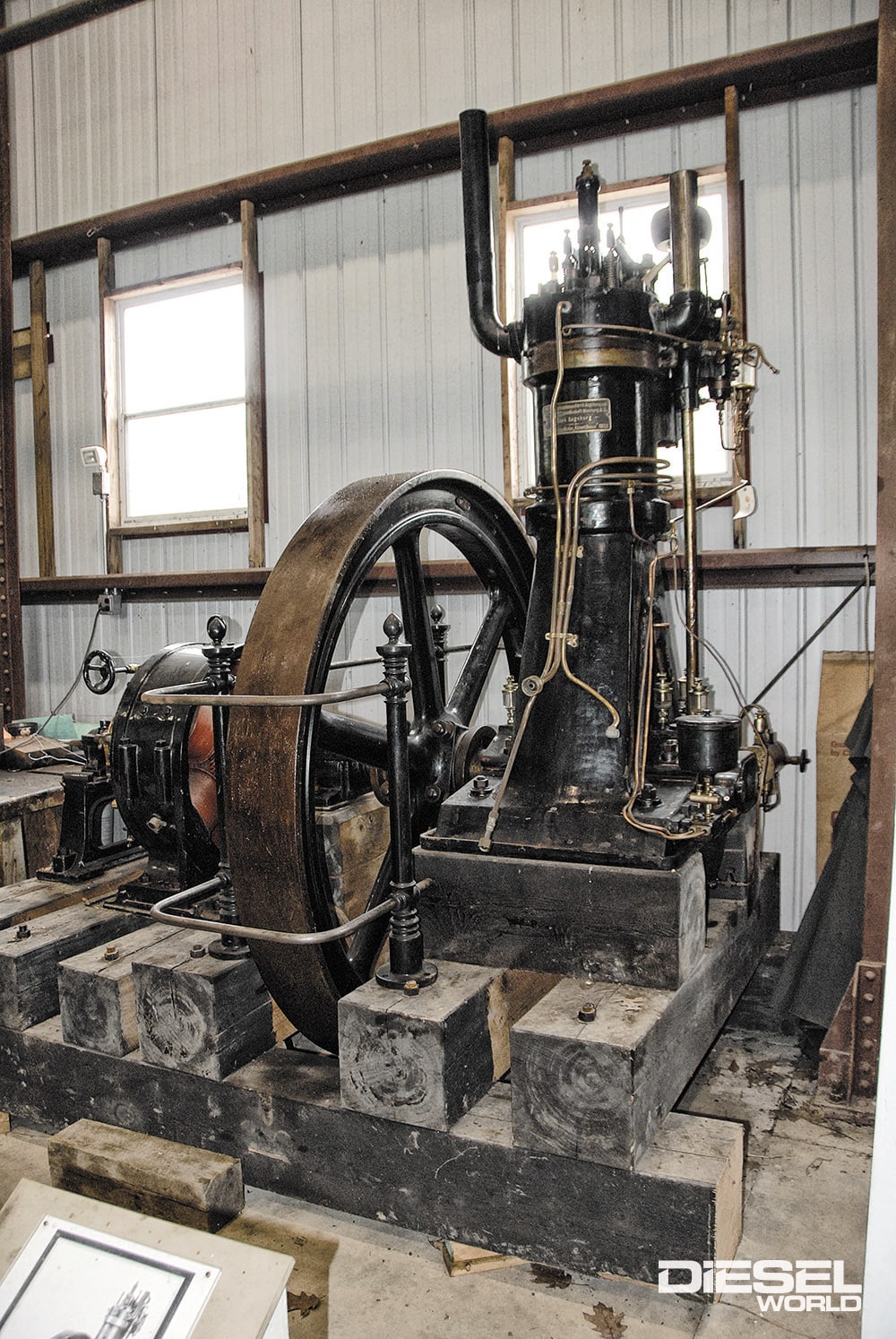
If you are an old engine nut, the Coolspring Power Museum has plenty to keep your jaw on the floor. As it relates to the earliest diesels, what you will see there is a 1903 German-built DM 12 engine with it’s original 6 KW generator. It was built by VMAMN (Vereinigte Maschinenfabrik Augsburg und Maschinenbaugesellschaft Nurnburg) and it’s the second earliest known engine currently in the United States built under the original Diesel patent. It will soon be the earliest running diesel in the world.
VMAMN was the forerunner of the well known engine maker, MAN (Maschinenfabrik Augsburg Nurnburg), which it became in 1908. Much of the early experimentation by Dr. Diesel was done in the Augsburg, Bavaria, VMAMN facilities. Augsburg was also the first manufacturing home for engines built under the Diesel patent. The VMAMN/MAN production engines of this era are often called “Augsburg” engines and that’s what we’ll call them here.
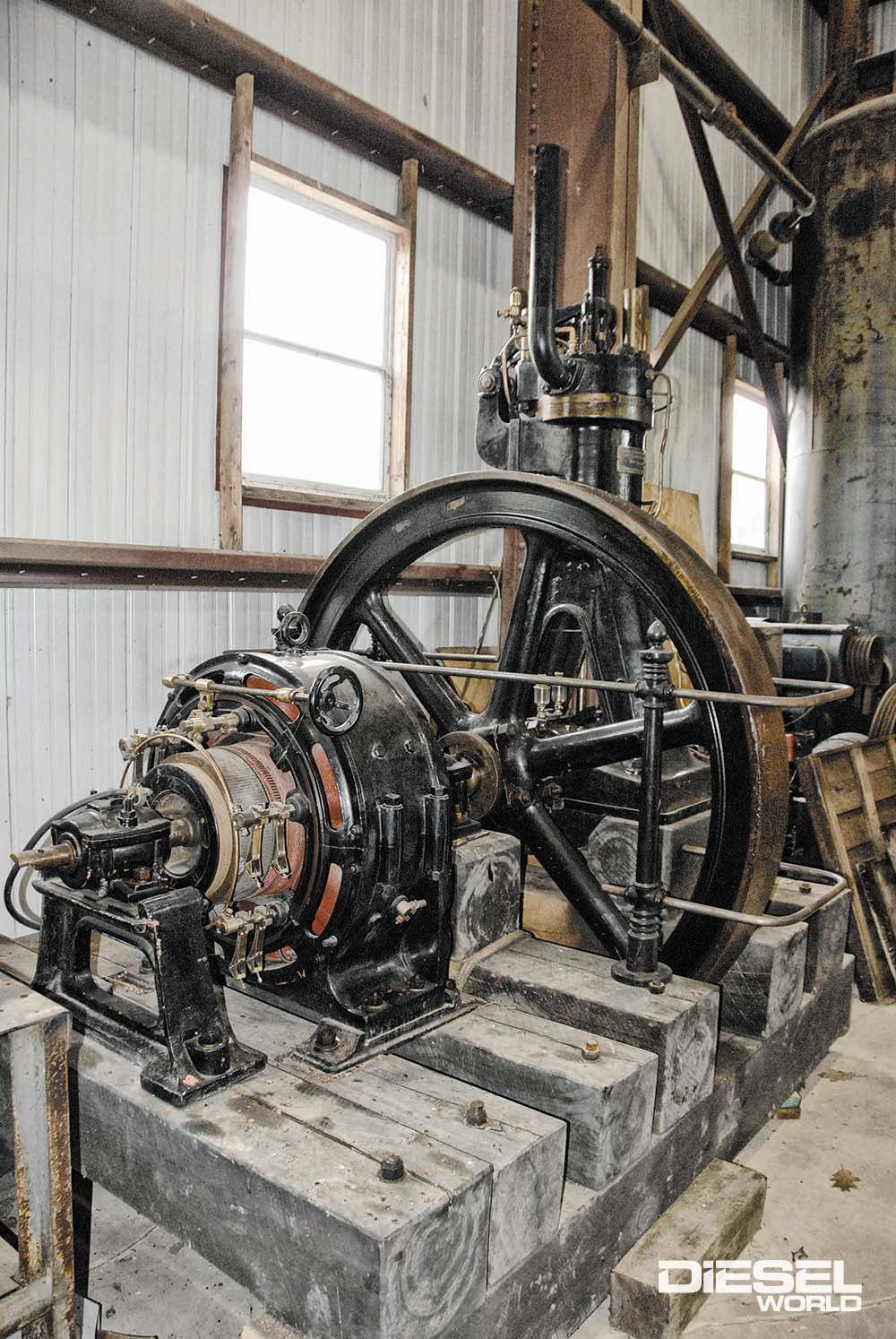
We won’t recap the entire Dr. Rudolf Diesel saga, but after three prototypes… third time’s a charm… Diesel and his cohorts came up with a winning combination. Late in 1897, VMAMN began tooling up to build engines similar to the most successful engine. The first production engine, a large two-cylinder, 60 hp engine, went into service in March of 1898 running a generator at a match factory and it is reported to have been in service more than 14 years. A line of standardized engines, the DM series, appeared in 1901 and in a few years, that line had expanded from 8 PS singles to 800 PS fours. “PS” is for pferdestärke (pferde= horse, stärke= power), a German metric measurement of horsepower 1.4 percent less than our non-metric horsepower but from now on well just use “horsepower.”
Of course we had our Diesel patent engines here too. In 1897, American beer magnate, Adolphus Busch, an ex-pat German, bought a license to be the exclusive North American manufacturer of Diesel engines. Note the capitalization, which is commonly used for engines built when the Diesel patent was in force. Busch established an engineering team, built a factory and soon had a design that was sold under the Busch nameplate. Busch didn’t have the market to himself for long because the Diesel patent expired here in 1912 (1908 in Europe). By then, many more diesels had joined the market, here and abroad.
DM Series- First Standardized Production Diesel
Though Dr. Diesel had sold a fair number of licenses, Augsburg was a few steps farther along the road to marketing Diesel engines because they had been in on the original developments. After selling a number of one-off Diesels based on the original prototype, Augsburg homogenized all they had learned and began development of a new standardized production engine in November of 1900. They became known as the DM series, “DM” for Diesel Moteren.
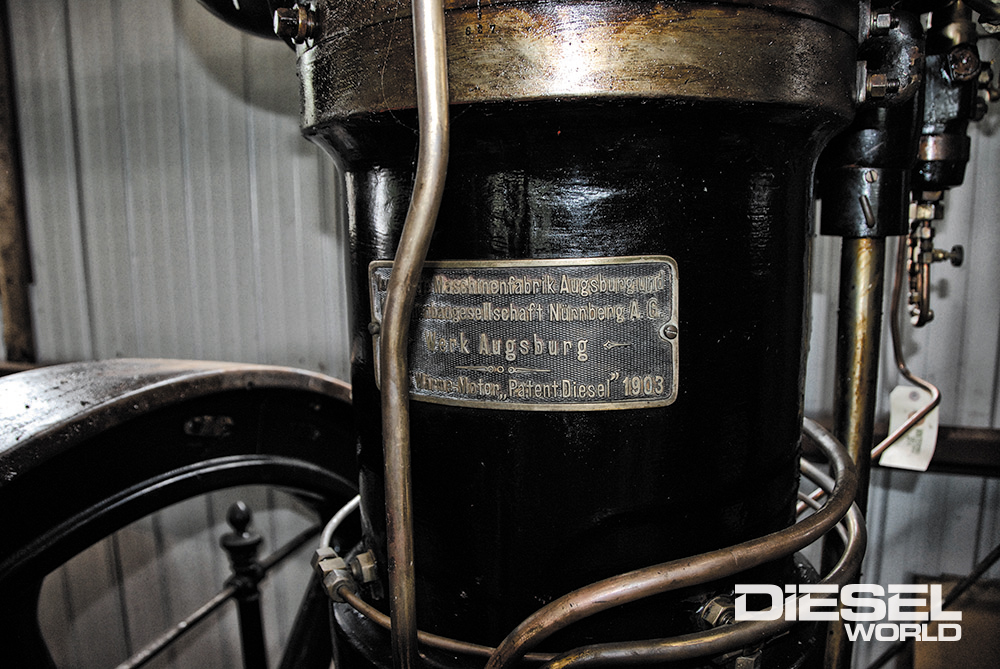
The development DM engine, and the first type produced, was the DM 70. It was a single cylinder engine displacing 2500 cubic inches from an 11.81 x 23.62-inch bore and stroke. Power was 70 horsepower at 160 rpm. Significant weight and package size reduction was achieved by eliminating the previous crosshead piston and rod assembly (essentially a two piece connecting rod) and going to the now-familiar trunk piston design (con rod attached directly to piston). The DM Series engines were noteworthy in being one of the first trunk piston Diesels.
By February of 1901, the DM 70 prototype was ready for its first test runs and development had started on a much smaller engine, the DM 8. You guessed it: It was an 8 horsepower (at 270 rpm) one-lunger with a 6.49 x 10.62-inch bore and stroke, displacing 352 cubic inches. Once both prototypes were running well, the fuel consumption was recorded and the DM 8 used 0.54 gallons per hour at rated power and the DM 70 used 4.79 gallons per hour.
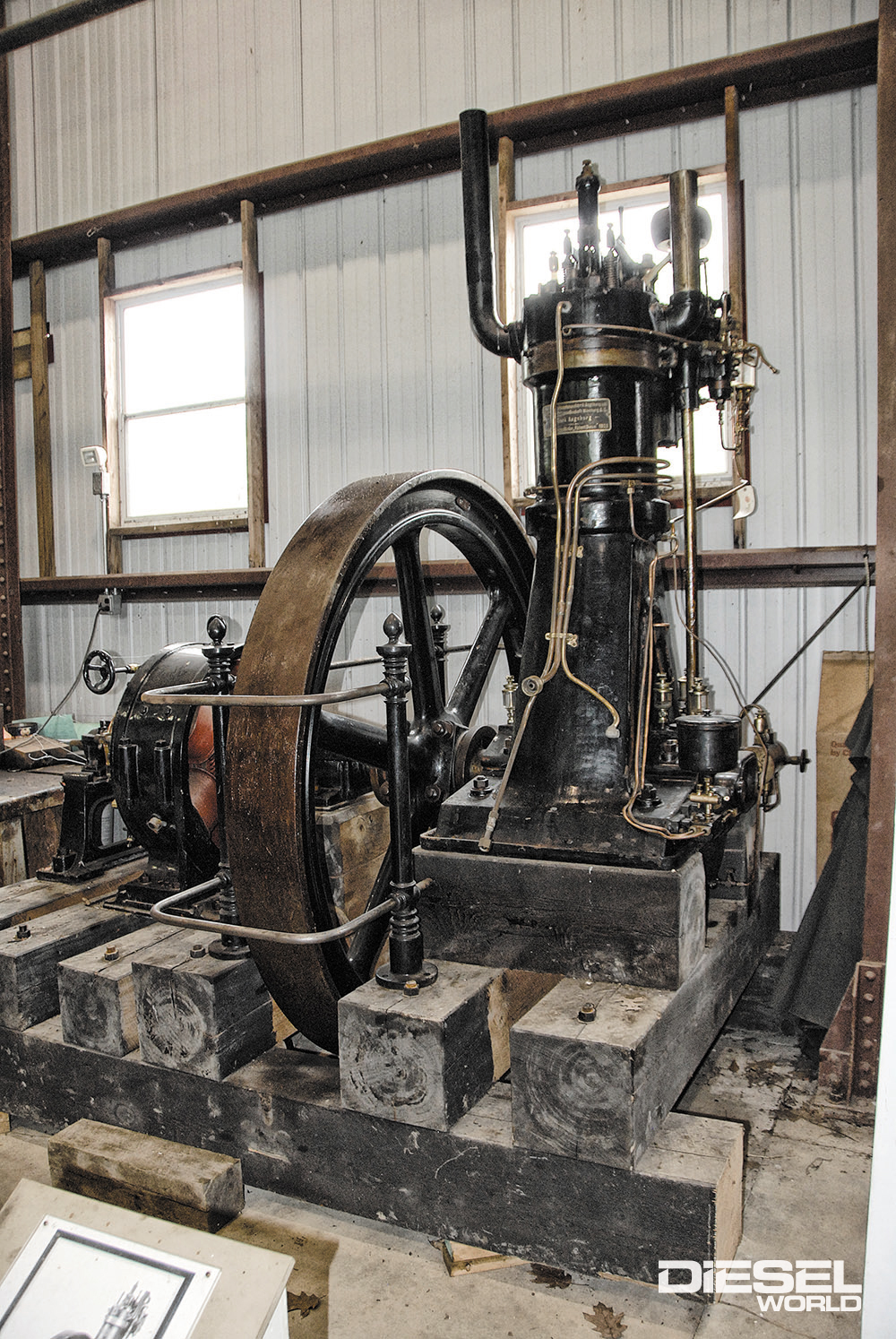
Once they had established the basic architecture, Augsburg began filling out their model lines. We don’t have information on the full range of offered but 1,484 DM series engines of all types were built to the end of production in 1916, including 124 DM 8, 105 DM 12, 81 DM 10 and six of the big 800 horse jobs. The rest were a mixed bag of one, two three and four cylinder configurations. In 1910, MAN developed a number of updated designs but some DM engines stayed in production They were re-designated to suit a new nomenclature convention. The DM 12, for example, was re-designated the A1V31 and built to March of 1914.
Air Blast Diesels
When Dr. Diesel translated his theoretical work to a practical design, a mechanical injection system that could overcome 500 psi in a combustion chamber and atomize the fuel was beyond the manufacturing capability of the day. Diesel figured out a way to use compressed air to push fuel through an atomizer and injector nozzle. The end result of air blast injection, finely atomized fuel, was just as good as the early solid injection systems that appeared later, except that the compressed air tended to cool the fuel charge a little more. Diesel had theorized the amount of air pressure needed could go as high as 1,200 psi but in practice, seldom was more than 6-800 needed. At that, it was still challenging the air compressor technology of the day more than a little and that was the air blast engine’s Achilles heel.
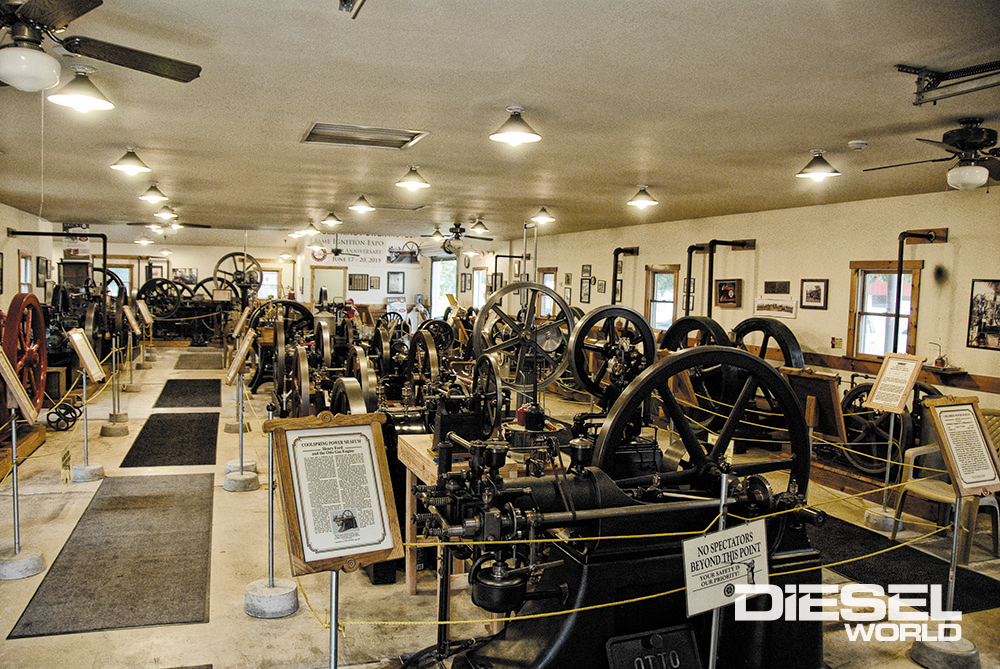
The downsides of the air blast system came from the associated equipment. First, an engine-driven high-pressure compressor added a lot of parasitical drag and plumbing complications. Second, there were dangers with high pressure compressed air. At 6-800 psi, air temps in the compressor could get as high as 1,000 degrees and that’s enough to ignite their own lube oil. “Kaboom!” Yeah, it happened! In all cases, an air-to-liquid intercooler was used to cool the air between stages, and the compressors had their own liquid cooling system as well. Plus, once the engine was warmed up, the operator kept air pressure adjusted as low as possible…just enough to exceed the pressure in the combustion chamber. The DM series engines have absolutely no “diesel knock” when operating properly and when the operator noted a knock, it was his clue to reduce injection air pressure.
To obtain the very high air pressure needed, two-stage compression was used. With engines before 1904, a certain amount of the engine’s cylinder pressure was used to provide the first stage compressed air, boosted by the crankshaft driven single stage compressor. Later engines used only a crankshaft-driven two-stage compressor and this eliminated one of the bigger sources of combustible materials, lube oil and unburned fuel, into the compressor.
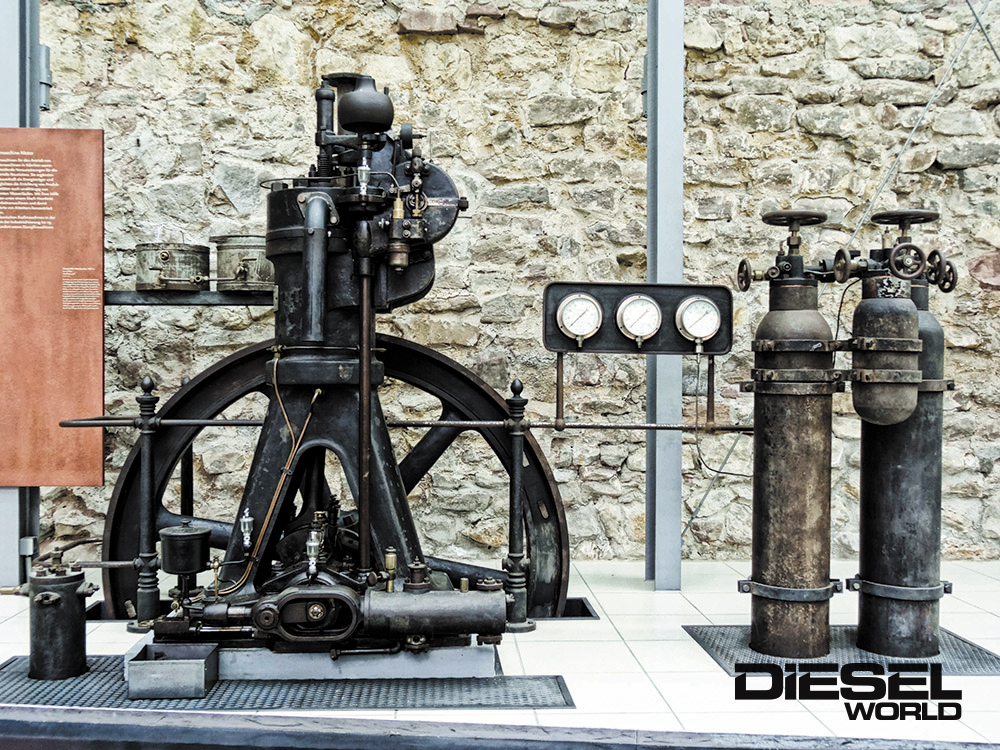
The moment machining and metallurgy processes were invented that could make reliable solid injection systems, manufacture of air blast injection diesels sharply declined and they had largely left the manufacturing scene by the end of the 1920s. Some of the later air blast engines transitioned from air blast to solid injection and a remained in service into the 1960s.
Henry Saves a Piece of Diesel History
Upon achieving his monumental success, Henry Ford began collecting significant early technology for a museum and acquired the 1903 DM 12 featured in this story for that collection. The collection grew into what is now known as Greenfield Village, or the Henry Ford Museum. Some of Ford’s original engine collection is still there, including an 1898 crosshead Diesel that is the earliest diesel in the U.S., but isn’t currently on display. DM 12 #185 engine was on display at the Henry Ford for some years but was eventually moved to storage and sold out of the collection in 1985. It had several owners and after being stored at Coolspring for many years, it was donated to the collection in 2018 and plans began to make it a centerpiece of the museum.
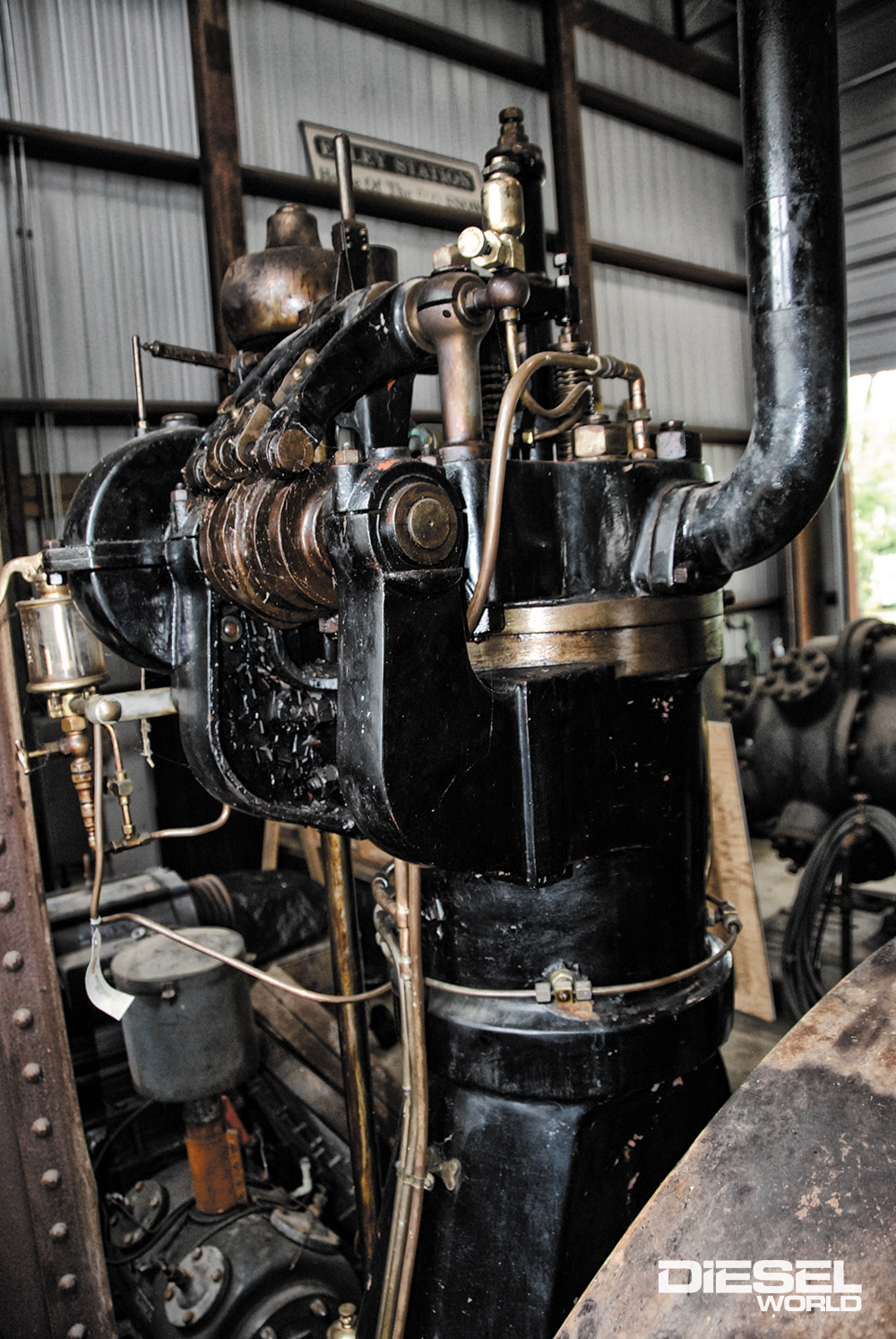
Help Preserve Diesel History
Because of its rarity and historical significance, the Coolspring Power Museum wants to get the DM 12 running again and set it up in a very special exhibit. An architect has designed a building that resembles a German powerhouse of the early 20th century. The plan is to build on the hill where some of their other special exhibit buildings are, including one that houses the now-famous Snow gas engine. They are fundraising right now to erect the building. Plans are that it will also house some other very early engines, including very early Graz and Benz diesels, thus being a repository for the earliest diesels in the collection and a monument to that early technology. They need your help to do that. There are many ways you can contribute, from outright donations, to the purchase of merchandise and even by buying a brick that will be set into the floor of the new building. Check out the contributions page of their website shown below and see if you can help.
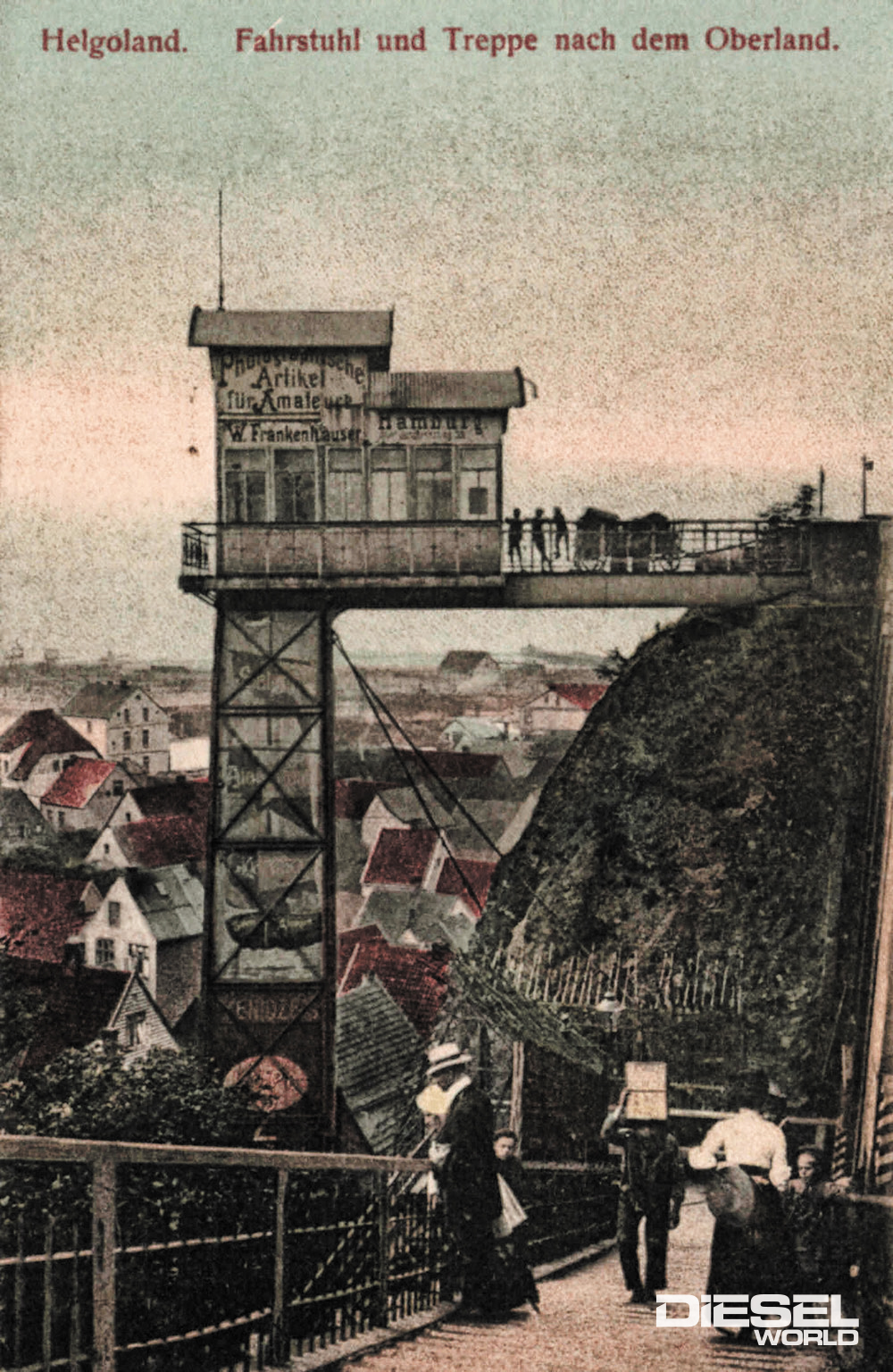
Coolspring Power Museum
The Coolspring Power Museum is located in Western Pennsylvania, not far south of Interstate 80 and just north of Punxsutawney, home of the famous Groundhog. Quite literally, the collection has something from every class and vintage era of internal combustion engine from 1877 to 1920. Though stationary engines from that era make up the core of the collection, you can also find some divergence into automotive, marine and agricultural engines into the 1930s and later. Plus some motor vehicles and tractors. According to Mike Murphy, current Vice President of the museum, 60-70 percent of those engines run, and are run regularly.
Coolspring Power Museum is a volunteer-run organization and if you join the other 500 members, you can help maintain or operate engines in the collection. Up to one third of the engines on display are on loan, mostly from members. In normal times, Coolspring has a large number of events and open days throughout the year. A large number of events were cancelled in 2020 due to COVID, but the staff remains determined to go back to an active schedule as soon as possible.
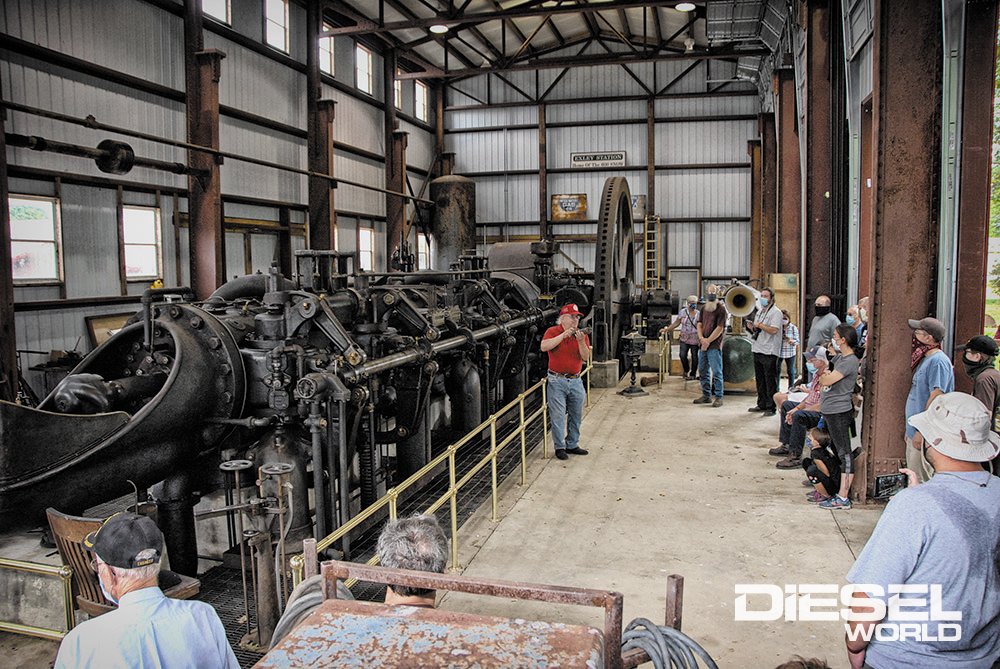
The gigantic Snow gas engine is one of the headliners at Coolspring. Built in 1917, and fueled by natural gas, it makes 600 horsepower at 100 rpm. It ran a monstrous air compressor and was donated to the Coolspring by National Fuels. Its a two-cylinder but the pistons are in tandem, one in front of the other. One piston is 18 inches in diameter and the other is 24. The stroke is 48 inches. If we did our math right, that’s 33,930 cubic inches displacement. Calculated torque would be 31,512 lbs-ft at 100 rpm. And you think you have a torque monster! The staff does startups several times a day when the museum is open to the public.
Sources:
CoolSpring Power Museum
WWW.COOLSPRINGPOWERMUSEUM.ORG

